- Making an Impact: AIAA Announces Winners of Prestigious Zarem Graduate Awards for Distinguished Achievement in Aeronautics and Astronautics
- Harry Hilton Memorial Lecture Held in September
- AIAA Hampton Roads Section Kept Busy During the Summer
- AIAA Announces 2023 AIAA Design/Build/Fly Draft Rules and Mission
- 2023 Trailblazing STEM Educator Award Applications Open
- AIAA Roger W. Kahn Scholarship Applications Open
- AIAA Fellow Petersen Died in June
- AIAA Associate Fellow Harvey Died in August
- AIAA Senior Member Wheelock Died in August
- AIAA Announces Section Awards Winners
Bulletin
AIAA Foundation Making an Impact: AIAA Announces Winners of Prestigious Zarem Graduate Awards for Distinguished Achievement in Aeronautics and Astronautics
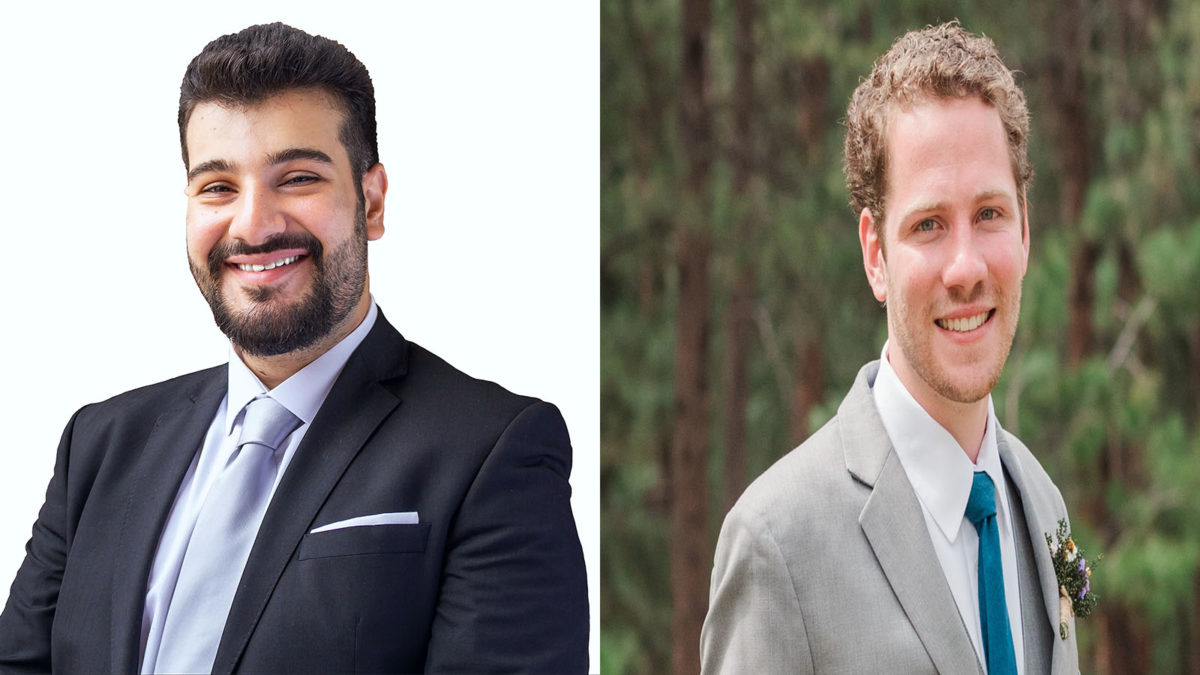
AIAA is pleased to announce the winners of the Zarem Graduate Awards for Distinguished Achievement. The winners will receive their award at AIAA SciTech Forum, National Harbor, MD, 23–27 January 2023.
Rudy Al Ahmar won the aeronautics award for his paper, “On the Kármán–Pohlhausen Momentum-Integral Approach: Extension to Flow Over a Cylinder with a Variable Pressure Gradient.”
Joseph Day won the astronautics award for his paper, “Tip Shape, Height, and Thickness Influences on Nonlinear Acoustic Damping from Baffle Blades.” Day presented his research at the International Astronautical Congress (IAC), held 18–22 September 2022 in Paris, France.
AIAA Honorary Fellow Dr. Abe Zarem, founder and managing director of Frontier Associates, established the Abe M. Zarem Graduate Awards for Distinguished Achievement to annually recognize graduate students in aeronautics and astronautics who have demonstrated outstanding scholarship in their field.
Rudy Al Ahmar
Rudy Al Ahmar is a research and teaching assistant pursuing a graduate degree in Aerospace Engineering at Auburn University. He is a member of the Advanced Propulsion Research Lab working with Joseph Majdalani as his advisor. His current areas of research focus on external aerodynamics, specifically on the application of CFD and analytical models to investigate various flowfield configurations. Al Ahmar recently competed in the AIAA Region II Student Conference and received third place in the Masters division. He tremendously enjoys teaching and helping his fellow undergraduate students improve their skillsets in mathematics, CAD, and aerodynamics. Having already published two articles including a journal paper in the Physics of Fluids, he aspires toward a full-time academic career where he can pay-it-forward to next-generation engineers.
”I am truly honored to receive this recognition. The underlying research extends the theory of both Dr. Majdalani and the late Dr. Xuan who passed away in 2020,” Al Ahmar said. “This prestigious award will significantly bolster my ability to achieve my career-long objective of pursuing a faculty position in aerodynamics.”
Al Ahmar’s faculty advisor, Joseph Majdalani, serves as Professor and Francis Chair of Aerospace Engineering at Auburn University. He previously served the same department as the Auburn Alumni Engineering Council Endowed Professor and Department Chair (2013–2016) as well as the Jack D. Whitfield Professor and H. H. Arnold Chair of Excellence in Advanced Propulsion at the University of Tennessee (2003–2013). Dr. Majdalani is known for his work on acoustic instability theory and vortex-driven rocket engine technology encompassing solid, liquid and hybrid rocket applications. He is a Fellow of ASME, Past Chair of the AIAA Hybrid Rockets and Solid Rockets Technical Committees, Region II Deputy Director of Technical Activities, Director of Honors & Awards within the AIAA Greater Huntsville Section, AIAA Short Course Instructor, Editorial Board Member of Aerospace and the Physics of Fluids, as well as Associate Editor of the International Journal of Aerospace Engineering and the International Journal of Energetic Materials and Chemical Propulsion.
Joseph Day
Joseph Day is a masters student studying mechanical engineering, with an emphasis in thermal fluid sciences. He enjoys working on both experimental and simulation research to study and predict the nonlinear damping that exists in liquid rocket engines. Working on something that has real tangible applications, but is not understood well at all, is quite exciting for him. As he looks to his career, he doesn’t have many professional aspirations, but more so a desire to tackle exciting and fundamental problems that are just not understood.
“I think it is easy to get bogged down in research and the day-to-day monotony of figuring out how in the world to solve a problem, and forget that what you are doing is special and important. So this award reminds me that I am doing good work and encourages me to keep pushing toward the finish line.”
Day’s faculty advisor, Matt Quinlan, is an assistant professor of mechanical and aerospace engineering at the University of Colorado Colorado Springs. He received his B.S. and M.S. in Mechanical Engineering from Colorado State University and his Ph.D. in Aerospace Engineering from Georgia Institute of Technology. Before returning to graduate school, he worked as a diesel fuel system engineer for five years and is an inventor on four patents in this field. His work focuses on the theoretical, experimental, and numerical study of combustion dynamics and instabilities.
For more information on the Abe M. Zarem Graduate Awards for Distinguished Achievement, please contact Michael Lagana at michaell@aiaa.org or 703.264.7503.
Member News Harry Hilton Memorial Lecture Held in September
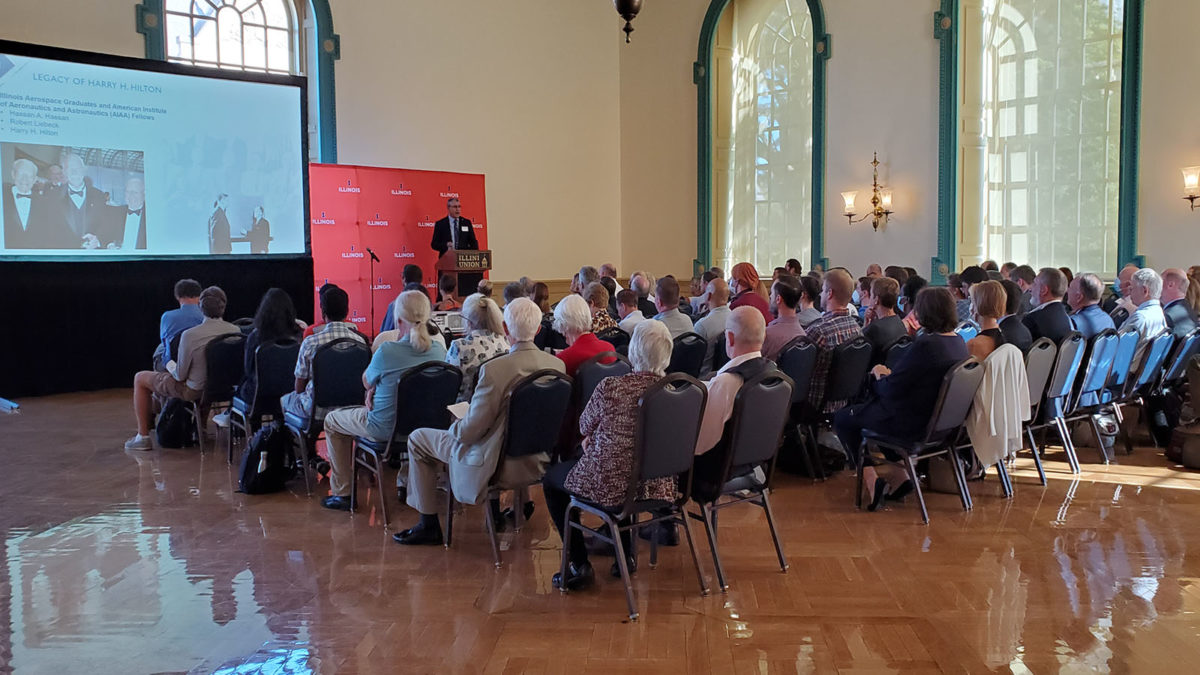
On 8 September, the Department of Aerospace Engineering at the University of Illinois Urbana-Champaign hosted a special lecture to honor AIAA Fellow and Professor Emeritus Harry H. Hilton, who passed away earlier this year.
The lecture, Evolution of Aerospace Technologies Supporting National Security Applications, was given by Basil Hassan, AIAA Immediate Past President and the director and deputy chief research officer at Sandia National Laboratories. He reviewed Sandia’s history and highlighted the role that Sandia plays in the development of capabilities that address a variety of aerospace engineering applications of national importance, including energy, homeland security, and defense.
Section News AIAA Hampton Roads Section Kept Busy During the Summer
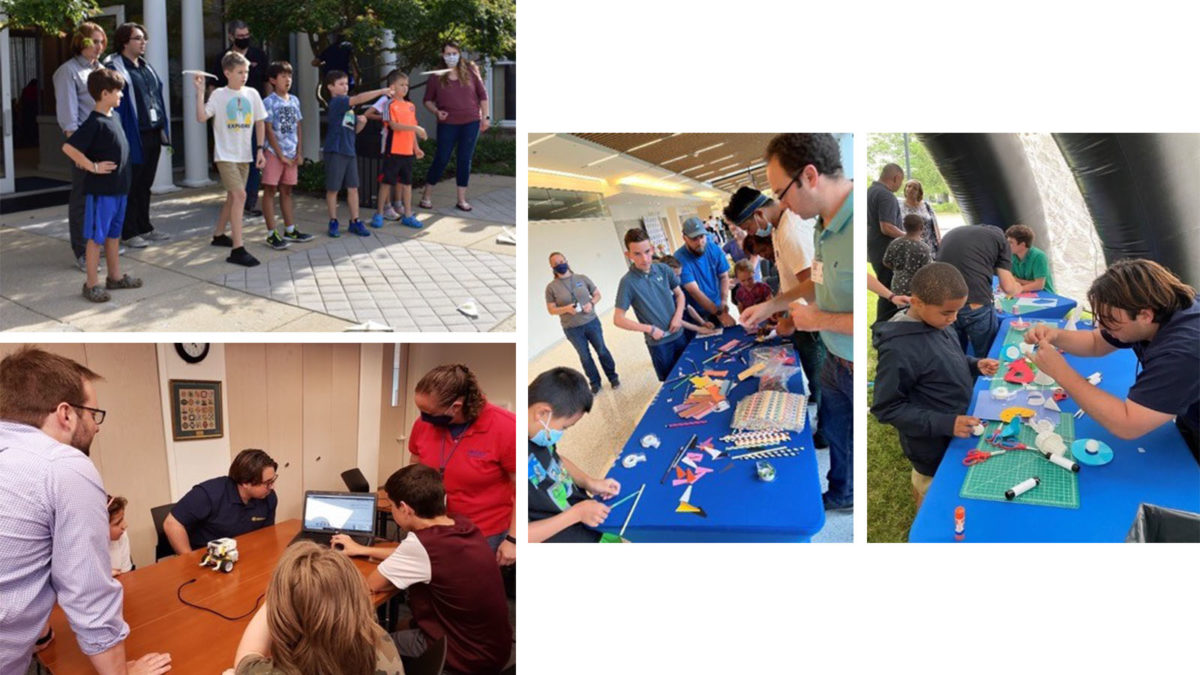
From articles by Amanda Chou and Karen Berger, HRS K-12 Committee Co-Chairs
AIAA Hampton Roads Section (HRS) took part in several outreach events during the summer including teaching students about lift, thrust, and control surfaces by designing gliders; programing LEGO EV3 robots; and running activities as part of the Kids Zone for the NASA Langley 105th Anniversary Workforce and Family Appreciation Celebration.
On 14 July, HRS was at Poquoson Library for an outreach event. HRS volunteers made foam gliders with the younger age group students who attended. The students had fun learning about lift, thrust, and control surfaces and went back several times to make modifications of their designs to improve the performance of their gliders as they competed for the farthest flying glider and the most accurate flying glider.
AIAA HRS ran two activities on 15 July, as part of the Kids Zone for the NASA Langley 105th Anniversary Workforce and Family Appreciation Celebration. The volunteers braved the summer weather and spent several hours helping to get kids excited about aerospace through hands-on activities.
The kids made straw rockets and also designed, built, and texted their own reentry vehicle in a small vertical wind tunnel. The participation was non-stop the kids seemed to have a great time (with more than one set of parents having to drag the kids away!).
And on 21 July, HRS volunteers taught teens how to program LEGO EV3 robots using the Mindstorm software package. They were tasked with programming their robots in teams to accomplish missions: navigating a maze and driving forward and turning around to tag targets repeatedly as many times as possible. The students used critical thinking and worked as a team to learn how to accomplish complex tasks using only two types of commands in these simple robots. The section is thankful for all the volunteers who devoted their time and energy to these programs.
AIAA Announcements AIAA Announces 2023 AIAA Design/Build/Fly Draft Rules and Mission
Student teams are invited to participate in the 27th AIAA Design/Build/Fly competition, hosted by Raytheon Technologies in Tucson, AZ. The 2023 mission is to design, build, and test an aircraft to execute electronic warfare (EW) missions. Flight missions will include staging of the aircraft, surveillance, and jamming. The goal is a balanced design possessing good demonstrated flight handling qualities and practical, affordable manufacturing requirements while providing a high vehicle performance. The 2023 rules document can be found at aiaa.org/dbf.
The 2023 Design/Build/Fly will be held at Tucson International Modelplex Park Association (TIMPA), 13–16 April 2023, Tucson, AZ.
AIAA Announcements 2023 Trailblazing STEM Educator Award Applications Open
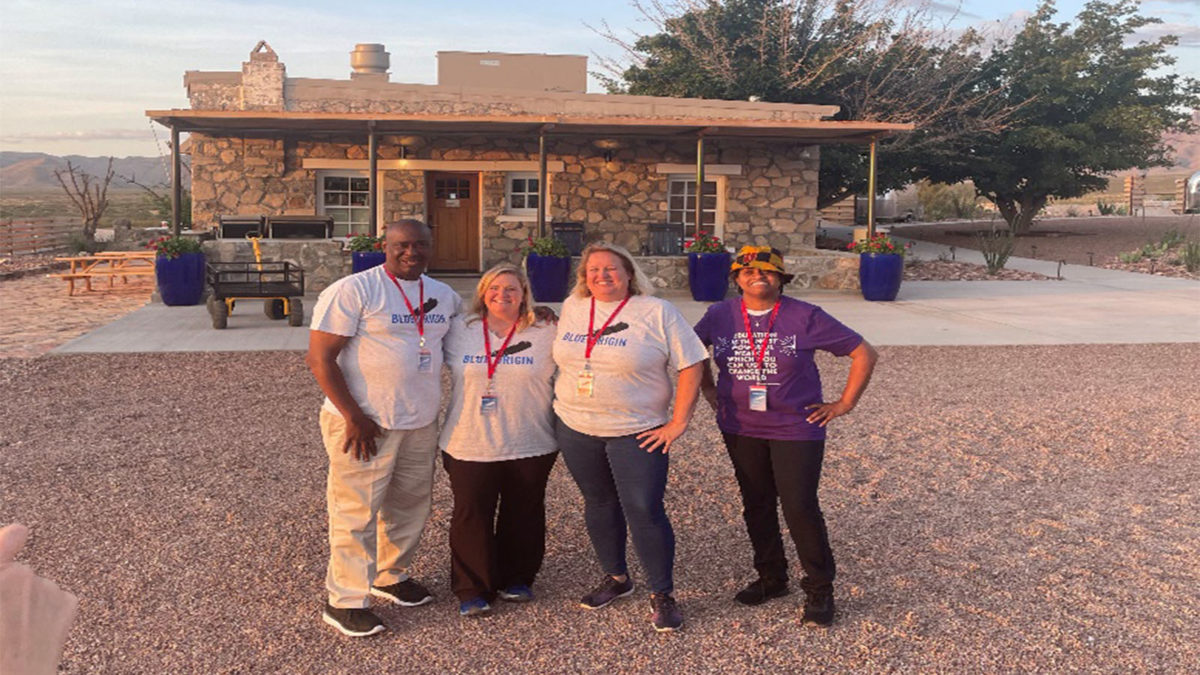
AIAA and Challenger Center are continuing our partnership of the Trailblazing STEM Educator Award. The award will celebrate three K-12 educators who go above and beyond to inspire the next generation of explorers and innovators in science, technology, engineering, and mathematics.
The award winners receive $5,000 for the educator, $5,000 for the educator’s school or organization, an all-expense paid trip to Washington, DC, to be honored at the AIAA Awards Gala, and free access to Challenger Center’s STEM education programs.
Details at: aiaa.org/get-involved/educators/trailblazing-stem-educator-award.
AIAA Announcements AIAA Roger W. Kahn Scholarship Applications Open
AIAA will award four $10,000 scholarships to current high school seniors who plan to study aerospace engineering at a college or university in fall 2023. AIAA will also provide an all-expense paid trip to Washington, DC, to attend the AIAA Awards Gala, where we recognize top aerospace professionals and contributors to the aerospace community. Each student also will be provided with a mentor from AIAA’s professional members to help guide the students to achieve a career in aerospace.
Details of the eligibility and requirements can be found at aiaa.org/kahnscholarship. Applications Close: 31 December 2022
Obituary AIAA Fellow Petersen Died in June
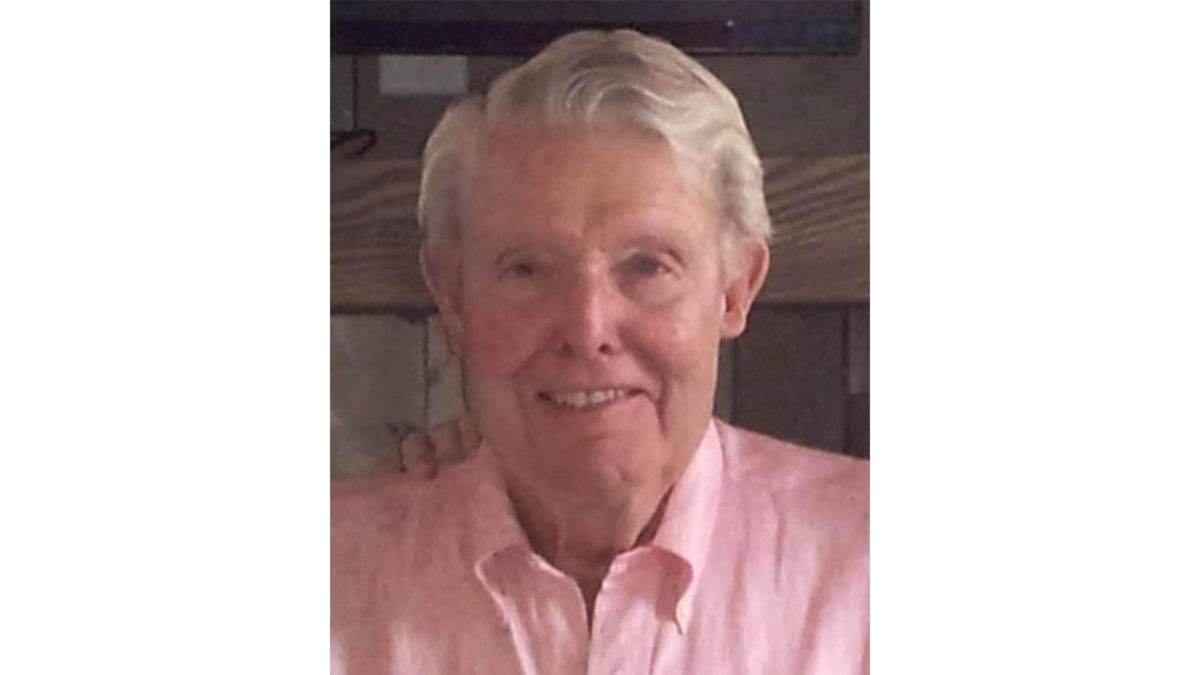
Richard H. “Pete” Petersen, 87, died on 18 June.
In 1956, Petersen graduated with highest distinction from Purdue University with a Bachelor of Science degree in Aeronautical Engineering, followed immediately by a year at California Institute of Technology (Cal Tech), receiving a Master’s degree in Aeronautical Engineering. He had been in the U.S. Air Force Reserve Officer Training Corps (ROTC) while at Purdue and was commissioned as an Air Force officer in 1956. The Air Force called him to active duty and assigned him to NASA (then National Advisory Committee for Aeronautics) Ames Research Center as a Research Engineer. After completing his Air Force service, he became a NASA employee. Petersen also graduated as a Sloan Executive Fellow from the Stanford Graduate School of Business in 1973.
Most of Petersen’s early career at NASA was focused on theoretical and experimental aerodynamics, particularly in the supersonic and hypersonic speed ranges. His projects included the Mercury capsule, the XB-70 Valkyrie Mach 3 bomber, and other novel research and development programs. In the mid-1960s, as computing became more embedded into aerodynamic research, Petersen directed computer studies of advanced aircraft including hypersonic transports, air-breathing launch vehicles, short takeoff and landing transports, and general aviation aircraft.
Petersen rose through various leadership positions at NASA Ames, including Branch Chief and Aeronautics Division Chief. In 1980, Petersen became Deputy Center Director at NASA Langley Research Center, eventually serving as Langley Center Director (1985–1991). He finished his NASA career at NASA Headquarters as Associate Administrator for the Office of Aeronautics and Space Technology (OAST) before retiring from NASA in 1993.
Petersen volunteered with AIAA in several capacities, including as the Chair, International Activities Committee (1988–1997) and Vice President, International (1994–1995) for the Board of Directors. He also served as President of the International Council of the Aeronautical Sciences (1994–1996).
Among his many professional honors are the 1991 AIAA Reed Aeronautics Award, the 2000 AIAA International Cooperation Award (co-recipient), a Distinguished Presidential Rank Award, a NASA Outstanding Leadership Medal, National Academy of Engineering Director Emeritus, and honorary doctorates from Purdue University, George Washington University, and the College of William & Mary.
Obituary AIAA Associate Fellow Harvey Died in August

Raymond J. Harvey died on 12 August. He was 60 years old.
Harvey had a B.S. in Aerospace Engineering from the University of Maryland and over 35 years experience in systems engineering and mission operations. At Johns Hopkins University Applied Physics Laboratory (JHU-APL), he was most recently the Mission Operations Manager (MOM) for NASA’s DART (Double Asteroid Redirection Test) mission, as well as for the Van Allen Probes mission, IMAP, and the CAT mission, among others.
As DART MOM, his responsibilities included interfacing with the project manager, systems engineers, all subsystem engineers, ground software, IT, and many others. As DART is planned to impact the asteroid Dimorphos on 26 September, the loss of Harvey will be felt.
Harvey was a member of APL’s Principal Professional Staff (PPS), a recognition of the highest professional standing and individual achievement at APL. In addition to being the SES-SIO (Space Exploration Sector – Space Integration Mission Operations Group) Assistant Group Supervisor for over 10 years, he also served as the group’s representative to the SES Engineering Architecture Counsel and as the group’s chief engineer.
Harvey enjoyed giving tours of the Mission Operations Centers, especially to college and high school students and newly employed staff. He was dedicated to introducing the field of space exploration and its excitement to young people.
A member of AIAA since 1983, Harvey was made an Associate Fellow in 2018. He served as the Chair for the Best Practices and Standards Subcommittee, leading a team of people developing and advancing Space Mission Operations Best Practices. He was also a member of the AIAA Space Operations and Support Technical Committee from 1999 to 2005.
Harvey authored on the order of 20 publications ranging from mission operations concepts to spacecraft fault protection to spacecraft integration and test. He was recognized with as many six NASA Group Achievement awards.
Obituary AIAA Senior Member Wheelock Died in August

Vincent J. Wheelock died on 28 August. He was 89 years old.
Wheelock joined the U.S. Air Force in 1951 and during his four years of service became a F-80C Shooting Star and F-86 Sabre jet engine mechanic in Korea. He received his Bachelor’s degree in Mechanical Engineering from Iowa State University in 1958, later earning the college’s coveted Professional Achievement Citation in Engineering (PACE) in 1997 for his contribution to the space program.
Wheelock joined the Rocketdyne Division of North American Aviation and remained with them throughout his career. He supported the space program and contributed wherever there was a need: NASA Kennedy Space Center, Edwards and Vandenberg Air Force Bases, NASA Marshall Space Flight Center, NASA Stennis Space Center, General Dynamics, and his home office at the Rocketdyne Facility in Canoga Park and at Santa Susana Field Laboratory. He enjoyed an exciting career spanning from the infancy of rocketry to putting a man on the moon, the International Space Station and beyond, all with the company he enjoyed.
In retirement, Wheelock contributed on several books, most notably Rocketdyne: Powering Humans into Space. He continued consulting on many efforts at Rocketdyne, including the collection and maintenance of the history of Rocketdyne, and as the curator of the Leadership and Learning Center at the facility. The Air Force Research Lab (AFRL) at Edwards AFB contacted him to help identify legacy rocket parts that were left all over the desert from the original space flight testing there.
He also received awards and recognition from worldwide organizations including multiple awards and certificates of appreciation from NASA and the U.S. Air Force, and his name was engraved on the Wall of Honor at the Air and Space Museum.




